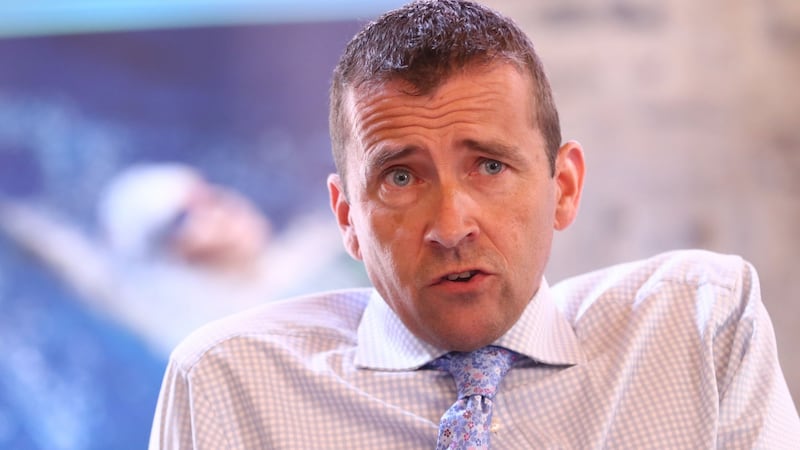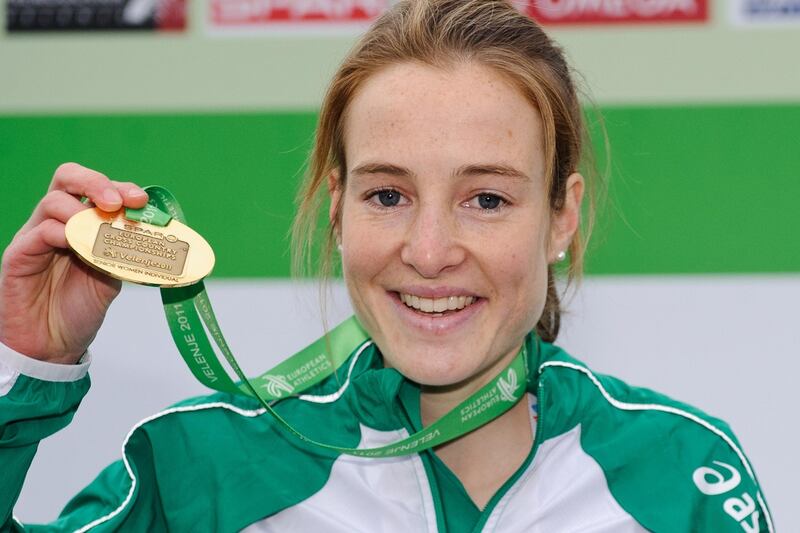John Fulham is a lot of things. According to his Twitter bio, he's a Limerick man and an avid Munster supporter. He's a massive Star Wars and Marvel fan, and he's also the former European champion at 100m and 200m wheelchair racing, as well as being a four-time Paralympian. Add to that, he's now a bit of a mad man.
Why?
Because on December 3rd, International Day of Persons with Disabilities, he’ll be racing his son, Harry, in the Liberty Race, a virtual race for people with and without a disability. If that’s not mad enough, Fulham is doing this race in his everyday wheelchair, possibly the equivalent of running a marathon in flip-flops or your slippers.
“First, the reason that I’m choosing that rather than my racing chair, which is in storage, is because it’s been around 11 years since I was in it. I did the marathon to try and get my wife to marry me. But I had given up marathons and racing a long time before that. So, I wouldn’t fit in it at this stage,” Fulham laughs over Zoom.
America at Large: Epidemic of hazing in high school sport disturbing on so many levels
Ian O’Riordan: Fionnuala McCormack lets her running do the talking
Roger Federer to miss Australian Open after multiple knee surgeries
Griffin retirement another blow for Ireland; 50 years of the All-Ireland club final

But, wheelchair racing is not just about fitting into your chair and being comfortable. As wonderfully demonstrated in the Paralympics in Tokyo, the racer is leaning forward in a foetal position with their legs tucked underneath them. There are three wheels, two at the back and one at the front of the chair, racer and front-wheel separated by a long nose in front to keep balance.
As for the technicalities, let’s leave that to Fulham to explain. “Comparing a normal, everyday chair to a racing chair, it’s built around aerodynamics, it’s built around getting down to the fastest speed that you can and being able to maintain that speed with the least amount of effort.
“So to do that, the chair is longer, it’s only got three wheels, it’s made out of lighter substances. The back wheels are carbon fibre, or if you’re Marcel Hüg (Swiss T54 Olympic gold medallist from 800m to marathon), you probably have a whole carbon fibre wheelchair.
“Then it’s about technique, and you push it in a very different way, you sit in it in a very different way, because it’s all-around speed and aerodynamics, whereas your everyday chair is just about pushing around casually from A to B. That’s why people would look at and go, ‘why is it long?’ Well, because it’s aerodynamic and the rolling resistance is less when the chair has wheels and length of that nature.
“The length of it is because when you push an everyday chair, it’s short, and you push it, your energy is going into the ground. But when you push a racing chair, the chair is long, so your energy is dissipated over the length of the chair. The energy goes into a forward motion rather than it digging down into the ground. So that’s where the chair is. The chair only has three wheels because that’s all you need.”
All about the craic
But the other reason is this is all about the craic. Sexy carbon fibre wheelchairs aside, this race isn’t actually for the likes of John Fulham or Marcel Hüg or proper wheelchair racers. This is about giving wheelchair users – about 40,000 exist in Ireland – the opportunity to go out, grab a few pals or family members and enjoy themselves. No race pressure, no set targets or times, just fun and an introduction to sport.
“It’s for the 99 per centers,” says Fulham, “ The Dublin Marathon is a fabulous event. But not an event that somebody can take on lightly without the work being put into it. And it requires a lot of preparation and work to go in and do it. And it’s an inclusive race, and it has its disability categories.
“But, for me, the difference between them and this event is that this is a recreational event. You don’t have to put in the hours and the miles daily to make sure that you can survive the distance. This is at a level that’s manageable and doable for everybody. And that it’s inclusive, to the extent that it’s a structure that anybody can just come along and be. And you can walk it, and you can crawl it; I wouldn’t recommend it. But you know, if that’s what you want to do, knock yourself out. And that’s the joy of it.”
Inclusion in sports is slowly starting to become more than a conversation starter. The Irish Wheelchair Association (IWA) has numerous clubs across the country, the Cara Centre in Tralee provide advice to sporting bodies and local sports partnerships, but individual clubs should still try and reach out to those looking to get involved in sport.
'If people are thinking, 'I don't want to fail, I don't want to end up with egg in my face', but if you're trying and if you're continuing, don't let it stop you, then you'll find a way'
“The first thing I say to a club is, ‘have you spoken to the people that you’re talking to? Why haven’t you spoken to them?’ Because they will have the answer, they will help you solve the problem,” adds Fulham.
“They will help you create a more inclusive world, and look, there are supports out there. I think they sometimes make it more than it needs to be. I don’t know if it’s fear awareness or just uncertainty. They don’t want to get it wrong either. I think there’s good intention behind awareness as well. Someone recently came to me, and they’ve moved back to work with Munster Rugby. And they had the child who had a disability, and they were like, ‘where do we go? How do we start?’
“And that’s, that’s such a real question, that’s the biggest off-putter. But they’ve started that process, and that’s the hardest part. It will never be a failure. It’s about your intent. It’s what you’re trying to achieve. Sport is a great example of that. You know, not everybody can come across the line first. And it’s about what is it that you want to achieve here.
“If people are thinking, ‘I don’t want to fail, I don’t want to end up with egg in my face’, but if you’re trying and if you’re continuing, don’t let it stop you, then you’ll find a way. It’s often not neuroscience or rocket science. Some of the steps are very straightforward, but it’s about being willing to have that open mind.”
This is the second year Liberty Insurance is running the Liberty Race virtually, with its success across Spain and Portugal inspiring the company to set off in Ireland. The Spanish edition has seen more than €240,000 raised to support the Paralympic Athletics Promises Team representatives, promoted by Liberty Seguros, a team composed of aspiring paralympians for Spain.
This year, Fulham has an extra incentive as funds are being donated to the IWA, an organisation he works for trying to ensure those with disabilities have a choice to participate in sport.
“Let’s start to try and develop that in Ireland,” he says. “And I think that the potential for it would be amazing. Even just in terms of role models, in terms of imagery, in terms of ethos, I think, I think there’s so much potential there, and I hope people buy into it”.
Participants are encouraged to donate to the IWA. In parallel, Liberty Ireland will also make a €1 donation to the IWA for every participant that completes the race.
Participants can register for the race via the official website, www.carreraliberty.es
















